I’ve been lucky enough to travel all over Georgia and see a good many of the country’s most awe-inspiring landscapes and significant landmarks up close. The downside is that after all that, I’ve become very hard to impress.
Just when I thought I’d seen it all, I found a corner of Georgia that took my breath away the same way Gergeti Trinity Church or David Gareja Monastery did on my first visit.
I’m not normally one for war monuments of any kind, but visiting the Didgori Battle Memorial was truly a moving experience. Knowing that one of the most pivotal events in modern Georgian history unfolded on these hills is one thing. The monument itself, an absolute work of art, is another. But for me, it’s the atmosphere and the dramatic location that makes this place so special.
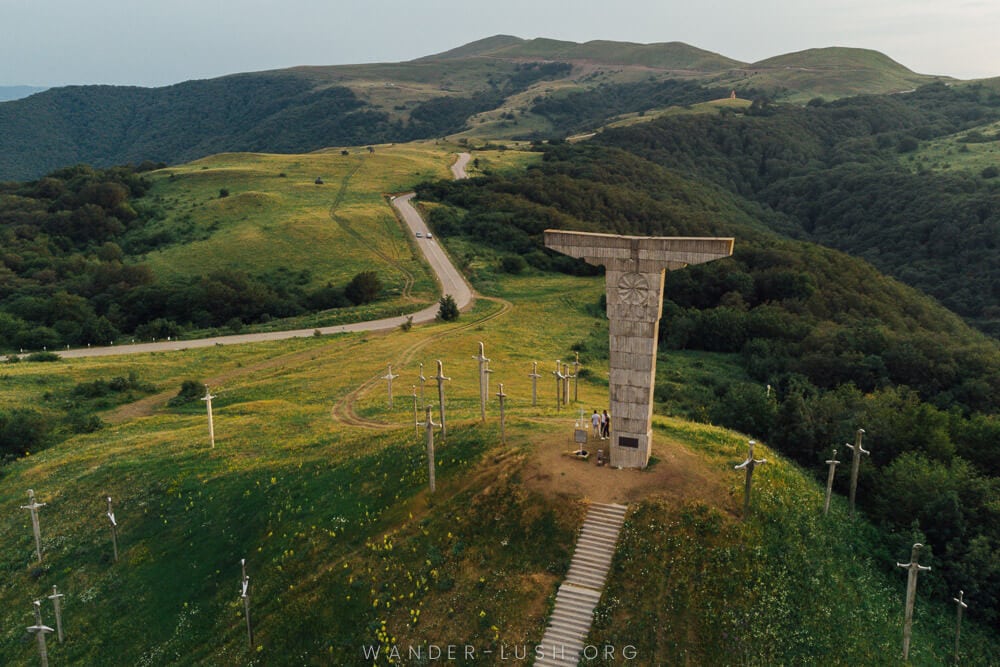
A few months earlier, I had no idea this place even existed. I’ll be forever thankful to the reader who tipped me off (you know who you are!) and encouraged me to go during my summer road trip around historic Kvemo Kartli region.
Didgori is located surprisingly close to Tbilisi (just 60km away) and is a convenient pit stop when you’re driving from east to west via the southern road. If you’re thinking of hiring a car to travel around Georgia, trust me: You need to put Didgori on your list!
Here’s everything you need to know to plan a visit to the Didgori Battle Memorial.
Please note: This post contains affiliate links, meaning I may earn a commission if you make a purchase by clicking a link (at no extra cost to you). Learn more.
What is the Didgori Battle Memorial?
The Didgori Monument commemorates the Battle of Didgori on August 12, 1121. The closing chapter of the Georgian-Seljuk wars, this clash precipitated the reconquest of Tbilisi leading to Georgia’s liberation and reunification – and ultimately the ushering in of the country’s short-lived ‘Golden Age’.
King David the Builder led the military campaign. On a mission to liberate the Caucasus from Turko-Persian control, he raised an army of 5,000 horsemen and 56,000 soldiers to face the Seljuks who numbered somewhere between 100,000-400,000 men. David harnessed the element of surprise and took advantage of the steep terrain to defeat the enemy, leading to what Georgian historians dubbed “the miraculous victory”.
The Didgori monument immortalises this great skirmish. Constructed in the early 1990s on the battleground, it centres on a huge stone monument, a sword emblazoned with a lion. Huge crucifix-like metal swords plunged into the hillside represent the lives lost in the battle. In the meadows beyond, sculptures of disfigured warriors similar to those found at the war memorial in the city of Gori sit in solitude.
A set of bells and a plaque sit next to the stone cross. Below, at the foot of the stone stairs one must ascend to reach the top, there’s a small auditorium and several more sculptural elements, including a tower of bells and a bronze owl.
Further down the road, a 30-metre-tall statue of David the Builder depicted raising his longhorn to summon his troops towers above the treeline.
The monuments at Didgori are spread over a vast area so you need at least a couple of hours to see everything plus visit the small St. George’s Church located nearby.
Photos of the Didgori Monument
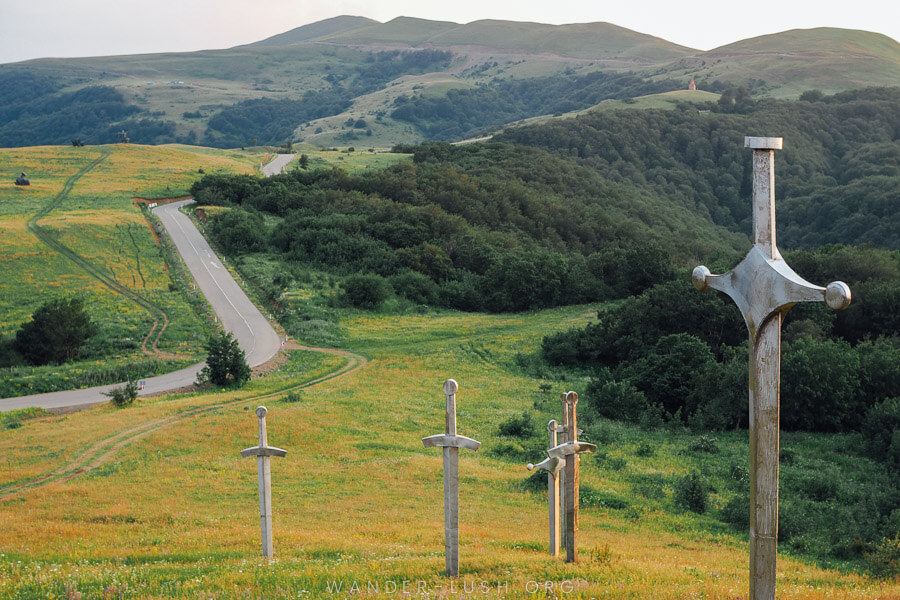


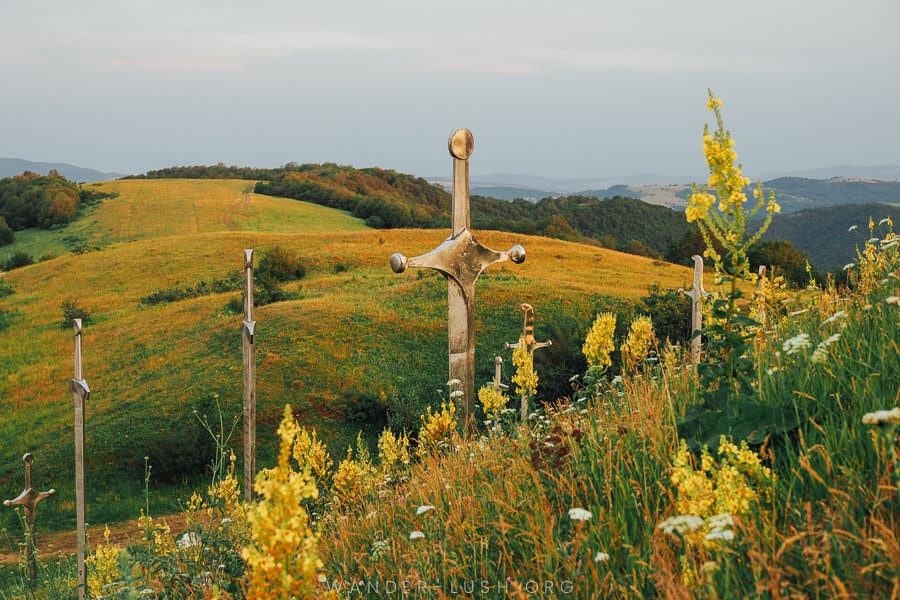

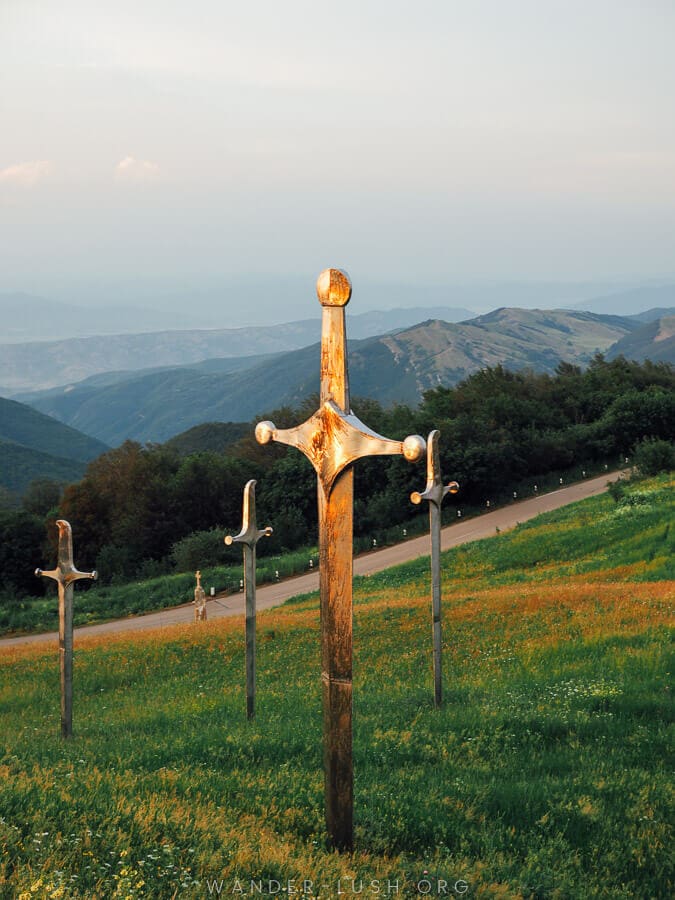

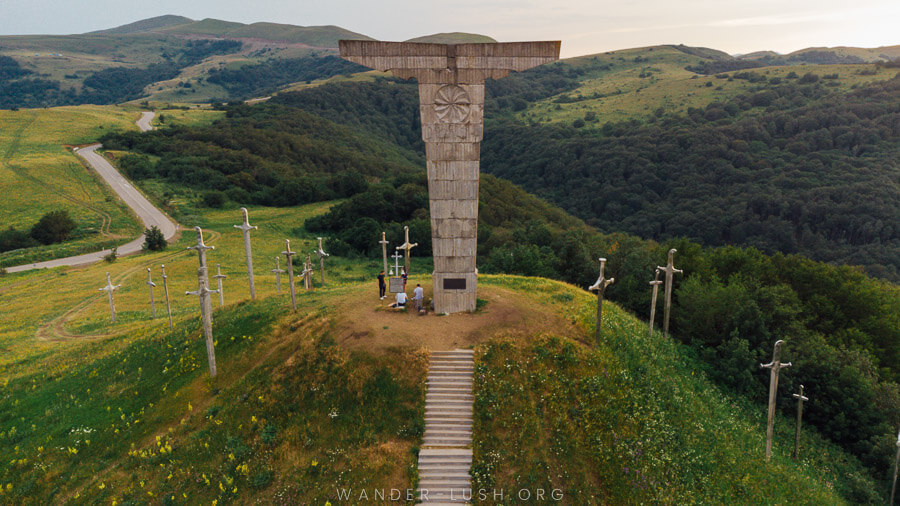


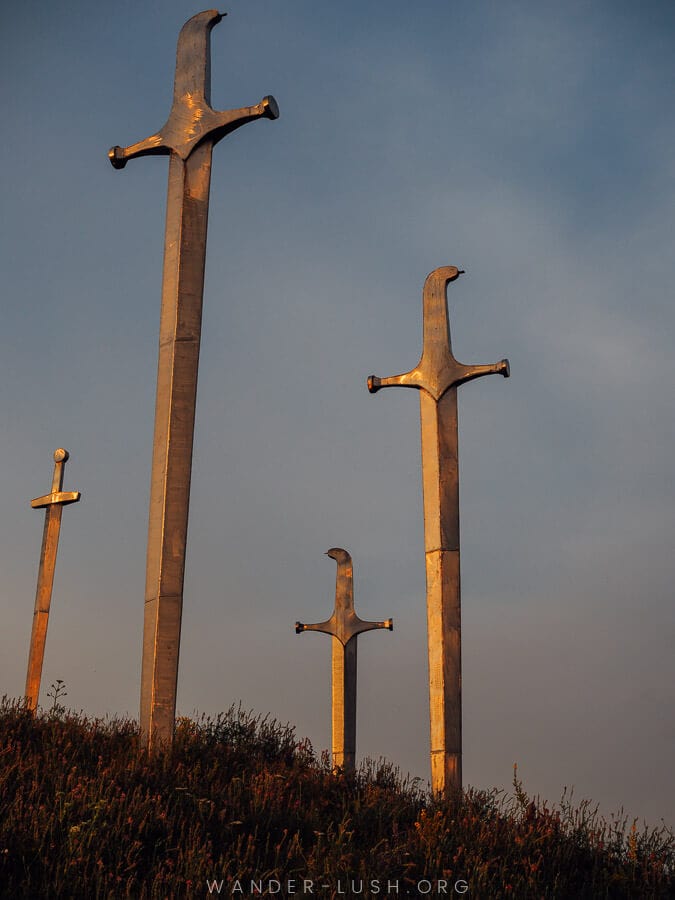
How to get to the Didgori Battle Memorial from Tbilisi
The memorial is located on the edge of Trialeti National Park in the middle of the hills. There is no regular marshrutka service to Didgori, so you’ll need a car to get there. The easiest option is to rent a car in Tbilisi and drive yourself.
It takes around 1.5 hours to reach the memorial from Tbilisi. There are two possible routes: Either through Tskneti and Manglisi (the southern route) or up and over via Mtskheta. Both take roughly the same amount of time.
The memorial road is brand new and SPECTACULAR. Honestly, driving up is half the fun. The road from the Manglisi side is 12km of perfectly paved, smooth highway that winds like a ribbon through the hills – it’s one of the most pleasant drives I’ve done anywhere in Georgia.
→ Rent a car in Tbilisi through my preferred partner, Local Rent.

If you want to visit Didgori at sunset like I did, then I highly recommend you spend the night nearby rather than driving back to Tbilisi in the dark. Manglisi is an obvious choice with a few solid guesthouse options. We stayed at Hotel Luka – simple rooms and great hospitality.
There are lots of other things to see and do in Kvemo Kartli region (see below). If you spend a night in Manglisi, you can make a trip of it and visit some of the monasteries, canyons and castles in the area.
If you don’t want to drive to Didgori, another option is to book a private transfer with GoTrip. Prices start from just 30 USD per car including pick and drop off at your address in Tbilisi.
→ Read my GoTrip review for more details about this service
It’s also possible to visit Didgori as part of an organised day trip from Tbilisi. This itinerary with Friendly.ge includes the memorial as part of a longer tour through Kvemo Kartli, including Asureti (one of Georgia’s old German towns) and Tsalka (Dashbashi) Canyon.
If you’re interested in booking this day trip, use the code wanderlush to get a 10% discount off the price.
Best time to visit Didgori
I visited Didgori in the first week of July. I wouldn’t normally visit a place like this in peak summer (it’s very exposed), but if you go in the early morning or the early evening, the light will be perfect.
One of the best things about going in late spring or summer is getting to see the incredible wildflowers. I don’t think I’ve ever seen so many blooms in Georgia; the hills were thick with yellow, lilac and pink blossoms, which only added to the atmosphere.
If you happen to be in Georgia on August 12, time your visit for the annual Didgoroba festival, a huge celebration that marks the anniversary of the battle with cultural and sporting events, folk music and a parade.
In winter, this whole area is under thick snow. A reader recently sent me photos from their winter visit – the landscape looks different but still very beautiful. If there’s enough snow, you can go sledding on the hill. Just make sure you have a suitable car and the right tires to tackle the icy roads.
Other things to do near Didgori
Kvemo Kartli region is a treasure trove of castles and canyons. I spent two days driving around this area and really enjoyed both the historical landmarks and the small towns. Here are a couple of highlights:
- Manglisi Holy Dormition Cathedral: 4th-century Orthodox monastery 30km from Didgori in the town of Manglisi.
- Birtvisi & Samshvilde Fortresses: Two of Georgia’s most important castles, each perched on a separate canyon wall south of Didgori.
- Asureti: One of Georgia’s old German villages that was settled in 1818. Visit for the half-timbered houses and the gorgeous restored Lutheran church.
You might also be interested in…
- The ultimate Georgia itinerary: Four detailed & custom-designed itineraries
- Georgia Travel Guide: All of my 200+ posts plus my top travel tips
- Georgia travel tips: 25 essential things to know before you go
- Places to visit in Georgia: 50+ unique & underrated destinations around the country
- The best things to do in Tbilisi: Favourites, hidden gems & local picks
- 35+ best restaurants in Tbilisi: Where to eat Georgian food
- 15 best day trips from Tbilisi: With detailed transport instructions
- The best time to visit Georgia: Month-by-month guide to weather, festivals & events